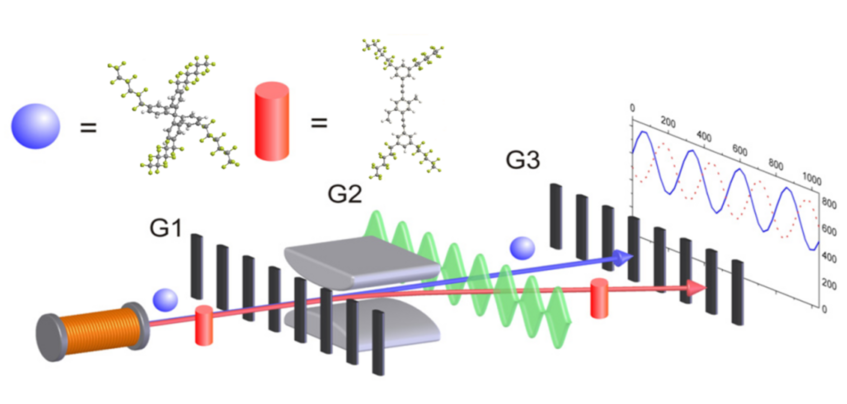Distinguishing Molecular Structure in KDTL interferometry

Structural molecular isomers have the same chemical sum formula and mass but a different internal arrangement of their atoms. While mass spectrometers will not tell them apart, KDTL interferometry can sense the internal optical polarizability even for molecules that are quantum delocalized inside the device. The polarizability-to-mass ratio provides a distinctive feature to separate structural or conformational isomers. Matter-wave interferometry may eventually provide new benchmarks for comparing computational models with experiments in controlled and isolated conditions.
- S. Gerlich, M. Gring, H. Ulbricht, K. Hornberger, J. Tüxen, M. Mayor, and M. Arndt,
Matter-wave metrology as a complementary tool for mass spectrometry
Angew. Chem. Int. Ed. Engl. 47, 6195 (2008). - Michael Gring, Stefan Gerlich, Sandra Eibenberger, Stefan Nimmrichter, Tarik Berrada, Markus Arndt, Hendrik Ulbricht, Klaus Hornberger, Marcel Müri, Marcel Mayor, Marcus Böckmann, and Nikos L. Doltsinis,
Influence of conformational molecular dynamics on matter wave interferometry,
Physical Review A 81, 031604(R) (2010). - Jens Tüxen, Stefan Gerlich, Sandra Eibenberger, Markus Arndt, and Marcel Mayor,
Quantum interference distinguishes between constitutional isomers
Chemical Communications 46, 4145 (2010).
